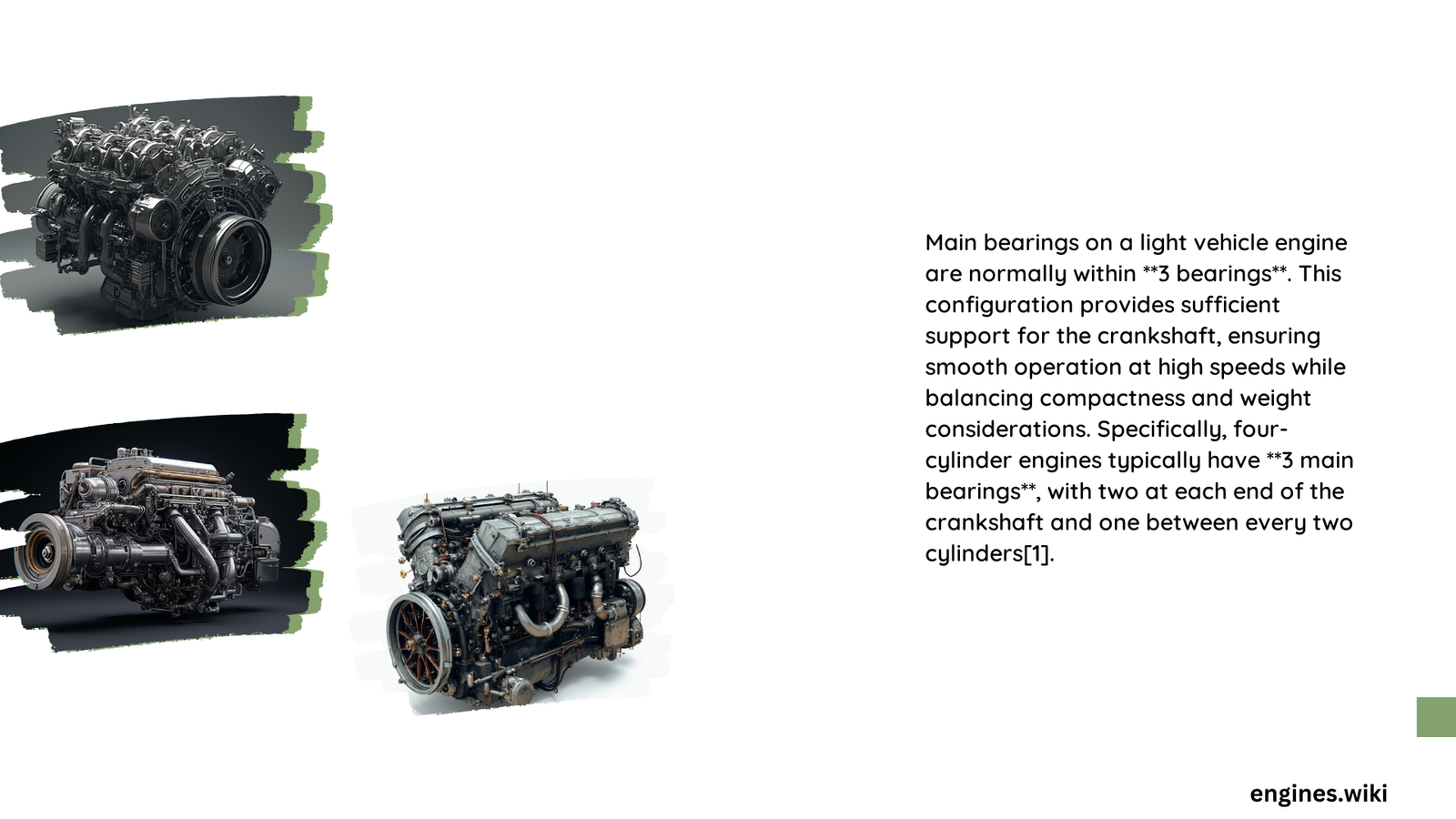Main bearings are critical components in light vehicle engines that support the crankshaft’s rotational movement, providing a smooth interface between the steel crankshaft and engine block. These precision-engineered components are designed to withstand significant mechanical stress, distribute lubricating oil, and minimize friction while maintaining optimal engine performance and longevity. Understanding their characteristics, installation, and maintenance is crucial for ensuring reliable vehicle operation.
What Are the Primary Types of Main Bearings?
Main bearings in light vehicle engines typically fall into three primary categories, each with unique structural and performance characteristics:
Bi-Metal Bearings
- Base Layer: Steel (SAE 1008, SAE 1010)
- Intermediate Layer: Aluminum-silicon alloys
- Key Features:
- 100% lead-free composition
- Enhanced wear resistance
- Superior seizure protection
Tri-Metal Bearings
- Layers:
- Steel back
- Copper alloy intermediate layer
- Specialized overlay
- Advantages:
- Superior load capacity
- Excellent seizure resistance
- Enhanced embedability
Aluminum-Tin Bearings
- Composition: Aluminum-tin alloys bonded to steel back
- Manufacturing: Cold rolling bonding method
- Performance Characteristics:
- High fatigue strength
- Excellent anti-friction properties
How Are Main Bearings Installed?

Required Tools
| Tool | Purpose |
|---|---|
| Bearing Installation Tool | Precise bearing placement |
| Micrometer | Clearance measurement |
| Cleaning Equipment | Surface preparation |
| Lubricant | Reducing initial friction |
Installation Process
- Comprehensive Cleaning
- Remove all debris from engine block
-
Clean crankshaft journals meticulously
-
Precise Measurement
- Verify journal and bore dimensions
-
Check against manufacturer specifications
-
Lubrication
- Apply thin lubricant layer
-
Ensure even coverage
-
Bearing Placement
- Use alignment sleeves
- Press bearings carefully
- Verify proper positioning
What Indicates Main Bearing Wear?
Performance Indicators
- Unusual engine knocking sounds
- Increased oil consumption
- Visible scoring on bearing surfaces
- Excessive clearance between crankshaft and bearings
Diagnostic Measurements
- Normal Clearance: 0.001 to 0.003 inches
- Recommended Inspection: Every 60,000 miles
- Critical Tolerance: ±0.0005 inches
Maintenance Best Practices
Preventive Strategies
- Regular oil changes
- Use high-quality engine lubricants
- Monitor engine performance consistently
- Address unusual sounds immediately
Replacement Considerations
- Follow manufacturer torque specifications
- Use precision measurement tools
- Consider professional installation for complex engines
Technical Specifications
Typical Torque Requirements
- Range: 30-70 ft-lbs
- Application: Main bearing cap bolts
- Procedure: Multi-stage tightening sequence
Conclusion
Main bearings represent a sophisticated engineering solution critical to engine performance. Their design, material composition, and precise installation determine an engine’s efficiency, longevity, and reliability.
